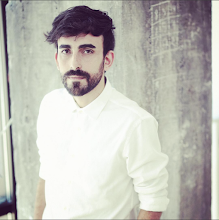
Sanatçılar: Gökçen Cabadan, Aslı Çavuşoğlu, Gökçe Çelikel, Nazım Hikmet Richard Dikbaş, Mert Öztekin, Tayfun Serttaş, Güneş Terkol
NON'ın açılış sergisi "geçersiz sebep / yeterli neden", muhakeme yeteneğimizin dönüşümünü farklı tarihi dönemlerde, yetişkinlik süreçlerinde, bazen iç gözlemlerle, bazen majör açılımlarla ele alan 7 işi bir araya getiriyor.
Gökçen Cabadan "hepimiz et ve kanız" adlı enstalasyonunda, herhangi bir sağlık ansiklopedisinde karşılaşabileceğimiz, yüz derisinin bir kısmı soyulmuş mükemmel görünüşlü bir çocuğun portresini ve saldırgan bir ifade verilmiş olan doldurulumuş bir gelinciği bir arada bize sunuyor. Aslı Çavuşoğlu, 18 "komik" videodan oluşan işinde, başkalarının ızdırabına gülmek üzerine kurulu güldürü videolarının baş rollerinde oynayarak karşımıza çıkıyor. Gökçe Çelikel, tablosuna kendi model oluyor ve ergenlik çağını çağrıştıran puantiyeli çorap, sahte inciler ve koyu renk fondöten ile poz veriyor. Nazım Hikmet Richard Dikbaş, yaratma sürecinin doğuş anına dikkat çekmek üzere yola çıktığı "9 Araba Bekliyor" adlı yerleştirmesinde bu zamansal, çok katmanlı ve sürekli kendini tekrar eden yapıyı haritalayan bir mekan kuruyor. Mert Öztekin, niçin Roma İmparatorluğu'nda yaşamış insan sayısından daha fazla insanın Roma İmparatorluğu konulu filmlerde oyunculuk yapmış olabileceğini araştırıyor. Tayfun Serttaş "Seni Seviyorum" adlı heykelinde, Sabiha Gökçen üzerine üretilen etnisite tartışmasının, yakın tarihimizin en acı verici cinayetlerinden birisine uzanan öyküsünü keskin ve mesafeli bir dille sorguluyor. Güneş Terkol, kreşte çekilmiş bir fotoğrafından yola çıkarak yaptığı "kendilerine değil birbirlerine" adlı işinde Yerli Malı Haftası meyvelerinden yapılmış maskelerin altındaki çocukların bakışlarındaki şaşkınlığı izleyici ile paylaşıyor.
--------------------------------------------
Artists: Gökçen Cabadan, Aslı Çavuşoğlu, Gökçe Çelikel, Nazım Hikmet Richard Dikbaş, Mert Öztekin, Tayfun Serttaş, Güneş Terkol
NON’s opening exhibition “unsound reason / adequate cause” brings together 7 works that trace the transformation of our judgment skills with introspections and major openings into different historical ages and the processes of adulthood.
In his installation titled “we are all flesh and blood”, Gökçen Cabadan combines a standard image from a health encyclopaedia, the portrait of a seemingly perfect child with a section of his facial skin peeled off to reveal the inner structure of the section, in juxtaposition with a stuffed weasel in an attacking posture. Aslı Çavuşoğlu stars in all the 18 “funny” videos her work is composed of, which are based on the idea of schadenfreude, or laughing at other people’s suffering. Gökçe Çelikel becomes the model of her painting and poses with dotted tights, fake pearls and dark foundation, suggesting adolescence. Nazım Hikmet Richard Dikbaş’s installation 9 Coaches Waiting sets out to focus on the moment of genesis in the creative process, constructing a space mapping this temporal, multilayered and repetitive structure. Mert Öztekin investigates how a higher number of people than the population of the Roman Empire itself managed to star in films based on the Roman Empire. In his sculpture titled “I Love You”, Tayfun Serttaş’s sharp and remote discourse interrogates the story of how a discussion on ethnicity about Sabiha Gökçen led to one of the most painful murders of our recent history. In her work titled “not for themselves but for each other”, based on a photograph of the artist at nursery, Güneş Terkol shares with the viewer the surprised look on the children’s faces, hiding behind masks made of fruit for the Home Produce Week.



